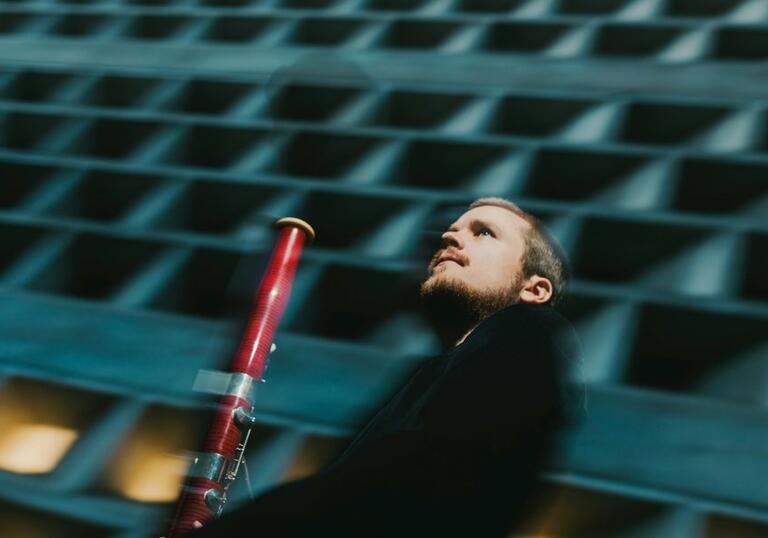Every so often an article appears in a newspaper about instruments facing endangerment, detailing the French horns and double basses that fewer students are picking up, the oboes and tubas seemingly going out of style. We lament about what can be done and look on as world-class musicians campaign for changes to the curriculum, to programming, to marketing, making and funding. The humble bassoon and its challenging double reed is a frequenter of lists such as these, continuing to vie for the attention it deserves: it is rare to attend an orchestral concert and hear a bassoon concerto, or go to a recital hall for an evening of bassoon sonatas.
Perhaps part of the issue is down to the instrument’s aforementioned double reed, which presents its own challenges to the player, beginning with choosing the right cane. Selecting the ideal piece is complex: there are things to look out for that will decide how that cane will sound before you have even begun forming the reed. When you are happy with the width and thickness and density, you begin to prepare by lightly sanding the underside of the cane, defining and soaking it for many hours. Once it has soaked and sunk, the formation of the reed may begin. There are potholes on the road to the perfect reed, and wrong turns. You might toil away at a seemingly perfect piece of cane for hours, only to find the sound is not exactly as you’d hoped. But then! After practice and experimentation, the effort pays off and there is that sound you know so well: the rich, warm baritone of the bassoon.
Today’s recital gives a wonderful opportunity to experience the breadth and depth of musical possibilities the bassoon holds in its slender form. The Icelandic composer María Huld Markan Sigfúsdóttir, who performs as a violinist and collaborates frequently with the notable rock band Sigur Rós, approaches the bassoon in a manner befitting this flexibility. Mixing the acoustic sounds of the instrument with a pre-recorded tape, she creates an intense ‘spherical’ sound world. In the electronics you are offered a framework built from recorded electric cellos, which the bassoon converses with and pushes against. The bassoon is the main character, asking questions, searching, remembering; slowly becoming, as the composer puts it, ‘more focused and direct, like a picture that is slowly taking shape’.
Questions of memory continue in Saint-Saëns’s late-in-life Sonata for Bassoon and Piano, one of a trio of works composed for woodwind instruments (the other two for oboe and clarinet) so that those instruments might not be forgotten. In a letter to his friend Jean Chantovoine, a French musicologist and biographer, Saint-Saëns wrote: ‘At the moment I am concentrating my last reserves on giving rarely considered instruments the chance to be heard.’ The music itself may be conservative in style, but it’s also moving, light and clever: a fitting tribute to a multi-faceted instrument that can do more than simply double the bass line in a symphony orchestra.
Skipping forward a few decades, we come to Poland in the 1950s, with three miniatures written by a 20-something Krzysztof Penderecki, enrolled at the Academy of Music in Kraków for studies in violin and composition. Originally for clarinet and dedicated to the university clarinet professor, the miniatures weren’t well received when premiered, but provide – especially when arranged for bassoon – a fascinating glimpse into the developing taste of a deeply interesting and influential composer’s early musical life. We get to peer into a more mature world in Lera Auerbach’s Air: I Walk Unseen – the name borrowed from John Milton’s poem ‘Il Penseroso’.
‘... Most musical, most melancholy!
Thee, chauntress, oft the woods among,
I woo to hear thy even-song;
And missing thee, I walk unseen …’
There is a wistfulness in Auerbach’s melodies, as if the bassoon is somehow both singing Milton’s words, and also whistling, wind-like, up and down the instrument, creating a visual world unto itself.
Picking up the virtuosity hinted at in Air, the bassoon is stretched as taut as possible in Heinz Holliger’s solo Klaus-Ur. The composer has described as ‘only suitable for the daring’, pushing the player to their absolute limits, requiring a virtuosity and sense of character and humour to carry the saxophone-like solo.
Finally, Daniel Schnyder’s Sonata for Bassoon and Piano continues the thrilling jazz/classical crossover in a piece originally envisaged for the soprano saxophone. The bassoonist needs to demonstrate not only a firm grasp of classical technique, but also an understanding of Latin jazz and Balkan folk influence.
So, how do you make a case for the bassoon in the modern world? You put together a programme as expansive and genre-pushing as this one from Mathis Stier and Rie Akamatsu. This collection of works is confirmation – if it were needed – that there is nothing more alive, more vital than the bassoon. If, of course, you can find the perfect reed.
© Megan Steller

